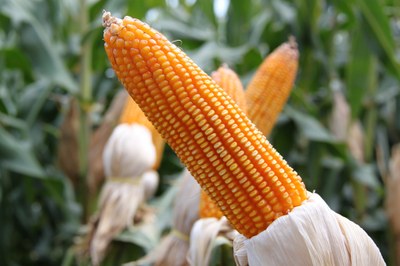In the entire speculative environment during the climate period regarding the US crop, the movement of expectations for production under the influence of prices is natural. Therefore, high or low volatilities, depending on the climate, are normal. The USDA report, this September, ended up removing part of this climate-related conception of prices by the market, that is, that US losses would be drastic and prices could rise in the middle of the harvest. In fact, the report cut the yield projection again, in line with market expectations. The adjustment to the planted area, however, compensated for the loss of yield and placed the 2023 crop at the level of the last two records, that is, 384 mln tons.
Tension in the Black Sea continues due to episodes involving grain-shipping terminals in Ukraine and Russia. This has not been enough to convert wheat into a full price recovery. On the contrary, pressure from Russia to sell wheat continues to be the focus of international price slowdown, despite low US stocks and the cut in world stocks. The fact is that the market is betting that, at some point, Russia will reduce its sales flow, which could bring some recovery to wheat prices globally.
Until that happens, what really matters is the current situation. The USDA’s September report raised Ukraine’s production again to 28 mln tons but did not increase the export forecast, certainly due to potential difficulties in exporting via the alternative channels found by Ukraine.
A new small cut in Europe’s crop changes very little what is already clear. Europe will continue to import around 24/25 mln tons in the 23/24 season. The European harvest begins this month, and we must imagine a period of decline in the purchases of the bloc. The biggest difficulty from now on is the logistic flow of Ukrainian corn that was serving part of North Africa and Europe. This difficulty could generate additional demand for Brazilian and European corn. In fact, Brazilian shipments in August already reflect satisfactory volumes for these destinations.
Global data now have a strong conflict of information to be resolved. Owing to heavy rains in central and northeastern China, USDA has brought a potential reduction in Chinese corn production from 280 to 277 mln tons. This expectation maintains the potential import curve, from this source, at 23 mln tons for the 23/24 business year. However, the Chinese government showed last week a production potential of 284 mln tons, which is a new record. It is clear that this estimate easily reduces import projections to below 20 mln tons. For now, China has made large shipments in Brazil, perhaps to neutralize potential imports of US origin.
The US harvest, in turn, presented what the market had projected, that is, a cut in yield. USDA cut US yield from 175.1 to 173.8 bushels/acre, against 173.3 bushels/acre expected by the market. However, the report’s surprise was the revision of the planted area to 94.9 mln acres, the largest since 2013. Then, US production jumped to 384.4 mln tons, only compared to the last two major production figures, in 2021 and 2016, which were slightly above this level. Owing to this year’s climate situation, we can say that US yield potentials could be above 180 bushels/acre for the next seasons.
This production broke the bullish trend in the international market and even in Brazil. Final stocks for 23/24 jump to 56.4 mln tons, against 36.9 mln in beginning stocks. Therefore, there is no way to find a bullish bias for this picture on the CBOT with this profile of the supply and demand picture. The market is trying to support itself from the wheat environment, with lower global and US stocks. However, as the US corn harvest advances, along with the Chinese crop in October, it seems difficult for us to sustain the current CBOT levels at USD 4.80 a bushel.
In this way, we now have the progress of the US harvest and the assessment of average yield after thirty days of strong heat and little rain during the maturation phase. Besides, strong exports in Brazil persist and remove from the US market the export demand that could sustain the CBOT at current levels, or part of it. The fact is that the market needs something new if it wants to sustain the current price levels. High oil prices and wheat are helpful indicators.
Follow the Safras Agency on our website. Also follow us on our Instagram and Twitter and stay on top of the main agribusiness news!
Copyright 2023 – Grupo CMA

